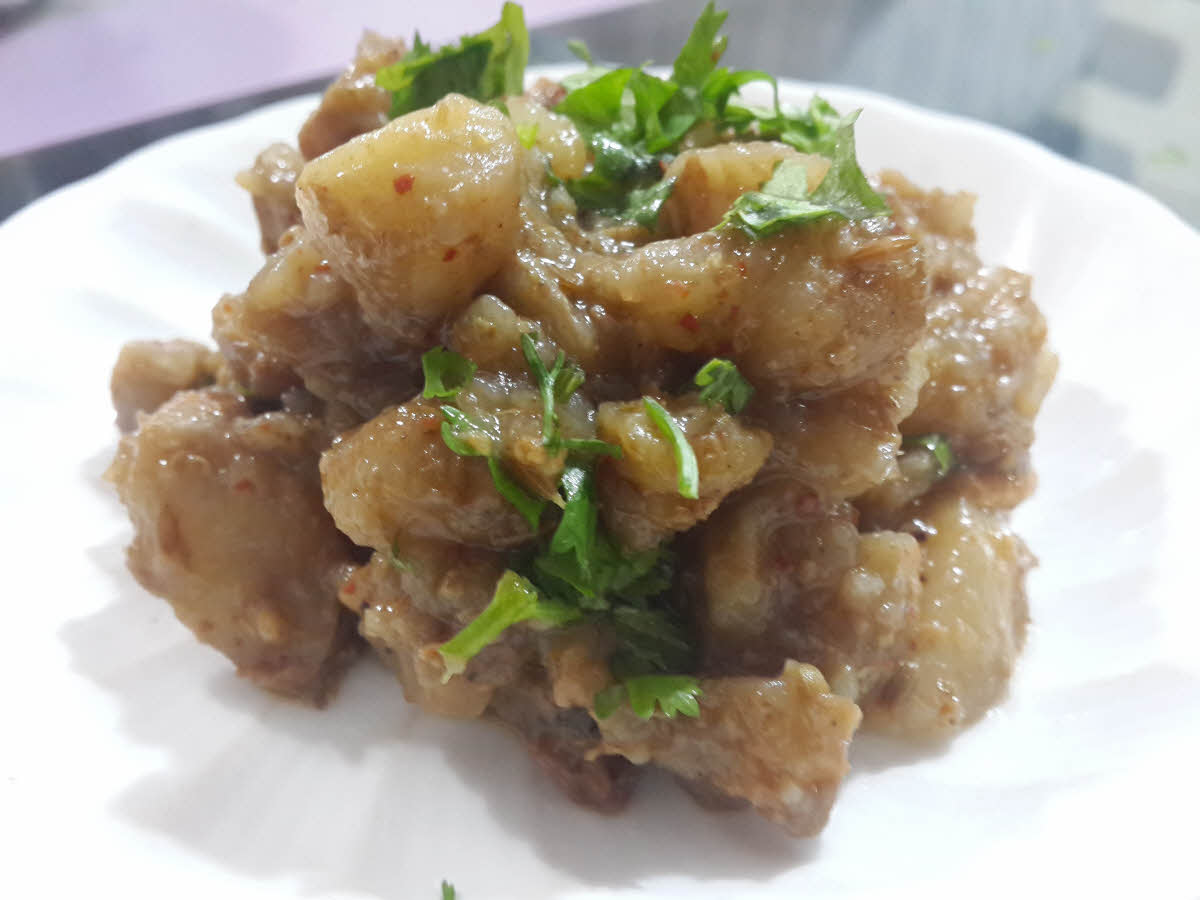Singhara grows in shallow ponds and is rich in minerals and protein. It is mildly sweet and tastes great without any cooking. However if it is not sweet, you have several options. You can boil them and eat just like that. You can make Singhare Ki Sabji or you can make Singhare Ki Kachri or Chaat .
| Preparation Time: | 20 minutes |
| Servings: | 2 |
| Difficulty: | Easy |
Ingredients
| Singhara (Water Chestnuts) | 250 gm |
| Vegetable Oil | 1 tsp |
| Jeera (Cumin Seeds) | 1/2 tsp |
| Salt | 1/2 tsp |
| Red Chilli Powder | 1/4 tsp |
| Coriander Powder | 1 tsp |
| Garam Masala | 1/4 tsp |
| Amchur (dried mango powder) | 1/4 tsp |
| Asafoetida (Heeng) | A Pinch |
| Fresh Coriander Leaves | To Garnish |
Method
- Wash the singharas thoroughly. They grow in muddy shallow waters so it is extremely important to wash them.
- Peel the singharas.
- Cut them in 3-4 pieces each.
- Heat the oil in a cooker and add jeera seeds and heeng and wait till they crackle. Sprinkle chilli powder and coriander powder.
- Add chopped singharas and salt. Mix them thoroughly and add about half cup of water.
- Close the pressure cooker and cook it. Lower the heat when it whistles. Turn off the heat after 5 minutes.
- Open the cooker when steam dies down. Add garam masala and amchur powder and mix.
- Garnish with coriander leaves and Singhare Ki Sabji is ready to serve.
Notes:
- Serve it hot with roti or rice.
- Singhara has a lot of health benefits. For example, it has a cooling effect, it improves appetite, relieves minot stomach issues.
- Singhara is gluten free and rich in minerals.
- Singhara flour is used in fasts.
Summary

Recipe Name
Singhare Ki Sabji
Author Name
Ruchi Garg
Published On
Total Time
Average Rating




 Based on 1 Review(s)
Based on 1 Review(s)





